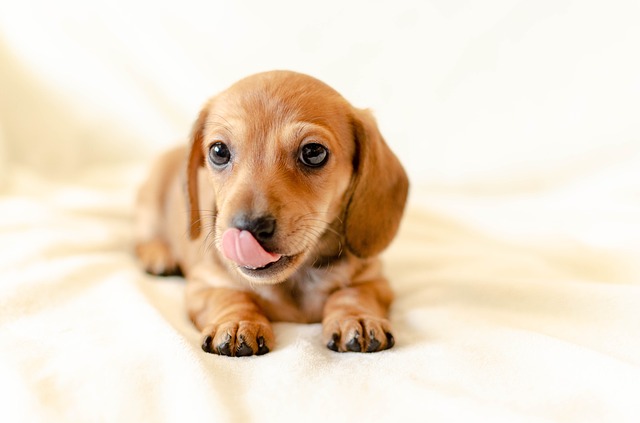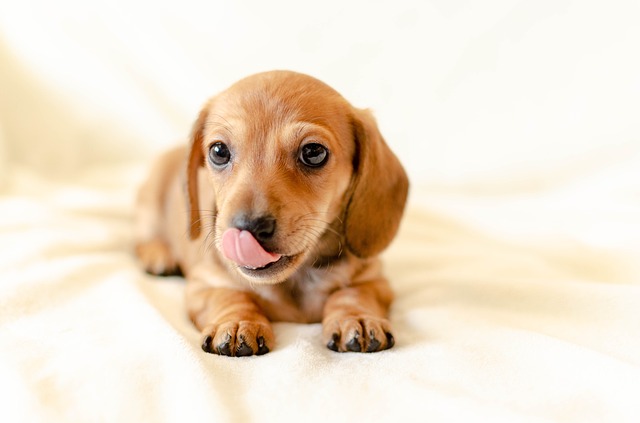The Redbone Coonhound is an American dog breed that belongs to the hound group. Mostly bred for its amazing hunting abilities, it’s famous for its top-notch sense of smell and fast running speed. Also, it can be a loyal family member.
This dog is certainly an interesting pet choice with its characteristic mahogany-red color and incredibly vocal tendencies. So let’s look at what makes it special:
- The Friendly Hunter
- Appearance — You Can’t Miss a Redbone When You See It
- Its Temperament Is a Win-Win Situation
- Food Enthusiasts — Be Wary of Overfeeding
- Health — As Fit as a Fiddle
- Low Maintenance Grooming for a Majestic Look
- Buying a Redbone Coonhound
Redbone Coonhound — The Friendly Hunter
The person responsible for this breed is a well-known fox hunter and dog breeder from Georgia — George E. L. Birdsong.
Foxhound Roots
The Redbone hound is a red Foxhound descendent brought to the US by Scottish and Irish immigrants in the late 1700s. These dogs were first noticed for their hunting abilities, so people bred them to enhance that and trained them to catch raccoons.
American Original
The breed was initially famous for its black saddle-like spot on its back, getting the name “Saddlebacks.” Throughout the years, Americans bred them, selecting the red mahogany color, so the “saddles” disappeared in time.
AKC’s Breed Declaration
The UKC registered the first Redbone Coonhound in 1902. The AKC recognized the breed in 2009, and it ranks 122nd among all dogs.
Appearance — You Can’t Miss a Redbone When You See It
Redbones have a favorable height and impressive coats, making them very recognizable and handsome.
Built for Speed
How big do Redbone Coonhounds get? These dogs stand at around 21–27 inches, with the females usually being smaller than the males. The average Redbone weighs about 45–70 pounds.
Sleek & Majestic Coat
These dogs have smooth, short coats that don’t shed much. The color is a beautiful mahogany red, which may be accompanied by a dark muzzle and some white spots on the chest and feet. The breed also has a specific musty scent, requiring regular baths to keep the odor under control.

Its Temperament Is a Win-Win Situation
It’s essential to consider personality as that greatly affects your relationship with your pet. So let’s look at the Redbone Coonhound temperament.
Well-Tempered at Home but Beasts on the Field
The Redbone is a large dog but a very adaptable one, so it does well even in an apartment. Still, a bigger house with a fenced yard makes the perfect environment for its size and manner.
The breed needs 30–60 minutes of daily physical activity, so try taking long walks or playing games together.
Loving Companions & Playmates
These dogs are very loving and loyal. Generally, they’re even-tempered and eager to please. Redbones love being part of a pack and won’t miss a chance to show you that they respect you and your family.
These dogs are playful. You can award them with fun dog toys they can explore and enjoy.
Marry & Gentle Around Kids
The Red Coon dog gets along with everyone in the family, including the children. These dogs are affectionate, kind, and love to play around. They might be a bit too rowdy for toddlers but are perfect for entertaining older kids.
Enjoys Hiking and Swimming
Bred specifically for hunting, this dog does great on all terrain, be it mountains or lakes. It can run and hunt while maintaining speed and agility. Also, it’s an excellent swimmer, so that’s a perfect option for exercise.
Get Ready for Barking
Do Coonhounds bark a lot? They’re famous for barking very loudly. It can be somewhat likable and musical to their owners, but neighbors and other people can find it annoying. That’s also the most significant issue of keeping them in a small apartment. We recommend this dog for a house with a bigger yard or the countryside.
Training Sessions Require Patience
You should start training your puppy from the first day you meet. Puppies have a very short attention span, so keep training sessions brief and fun.
Sometimes puppies interpret your commands in their own way and get creative with their reaction. You also might notice that your Redbone hound is a bit stubborn during training, so be patient and persistent. If you need help, consider using an educator collar or contact a dog trainer.
Food Enthusiasts — Be Wary of Overfeeding
Choosing dog food is quite confusing as there are too many products on the market. Opt for all-natural, dry kibble food for large dogs because it contains all the nutrients your dog needs. Avoid an “all-life stages” formula and foods with high amounts of artificial ingredients that may hurt your dog’s diet.
Obesity can be a severe problem. To maintain a stable Redbone Coonhound weight, you have to be careful with the portion sizes, which depend on age, size, and activity level. These dogs are very prone to overeating, so check their weight regularly. We encourage bowls for slow feeding that trick your dog into eating slowly.
If your dog’s too picky, be more strict. Leave the food out for 30 minutes and then take it away until the next meal. That will teach your dog that it should eat on time, creating a positive habit.

Health — As Fit as a Fiddle
Redbone Coonhounds are quite healthy and prone to a small number of diseases. They have a long lifespan and can be excellent companions throughout a big part of your life.
Redbone Coonhound Lifespan
The average life expectancy is around 12–15 years. During this time, most health issues might occur due to their very active lifestyle, either getting hurt when running or encountering aggressive raccoons.
Common Health Issues
The breed has a few hereditary conditions, including:
- Hip Dysplasia. This disease affects your dog’s hips, where the thigh bone doesn’t fit its joint socket. It results in disturbed movement like limping, maintaining a strange posture, and unusual gait. If you notice any symptoms or want to prevent them, we recommend using supplements such as Nutramax Soft Chews with MSM and Omega-3s on Amazon. They can strengthen the joints and maintain normal movement.
- Ear Infections. Redbone dogs are prone to ear infections, mostly due to their big floppy ears. You might notice symptoms like head shaking, scratching, and rubbing, but you may also see your dog tilting its head, holding one ear down, and being reluctant to have the head or ears pet. It’s best to check and clean your dog’s ears at home at least weekly.
Low Maintenance Grooming for a Majestic Look
Do Redbone Coonhounds shed? Yes, they do. The good news is that they don’t shed very much, so they don’t require high-maintenance grooming. Weekly brushing with a rubber curry brush is usually enough and keeps their coats shiny and clean.
A big problem for some people may be their characteristic “houndy” odor, but many owners like it. Bathe your dog regularly once or twice a month to take care of this smell.
Brushing their teeth is also essential for maintaining good health. Use vet-approved toothpaste and brush at least three times a week. That will help your dog have fresh breath, remove plaque, and prevent gum and tooth diseases.
These dogs might wear off their nails with all that running. Still, you should check them at least once a few weeks and trim them to prevent injury.
Buying a Redbone Coonhound
Do your research before you decide on a dog. Some unethical people have puppy mills meant to only breed and sell puppies for profit. They don’t care for the dogs’ safety and health.
So, ensure to find reputable breeders that take care of their dogs. They’ll tell you all you need to know about the breed, including genetic predispositions. They should also provide necessary vaccination certifications.
Good breeders might recommend you meet the pup by slowly introducing yourself for a few weeks or days before taking it home.
Adopting a dog is always a great option, as well. Giving a warm home to an older dog can save its life. They might have special needs, so if you think you can help, please consider adopting or rescuing instead of buying.
To Sum Up
The Redbone Coonhound is a beautiful dog in a characteristic mahogany red. It was bred mainly for hunting, so you need to keep up with its training and exercise needs. Its melodic bark is engrained in its nature. Some find it pleasing; others think it annoying.
These pups are quite healthy, with only a few inheritable diseases. Maintaining their beautiful coats isn’t very time-consuming, but you’ll need a few hours a week to do it properly.
At last, if you’ve interested in this breed, research it well before you buy or try to adopt a lonely pup and give it a happy home.


